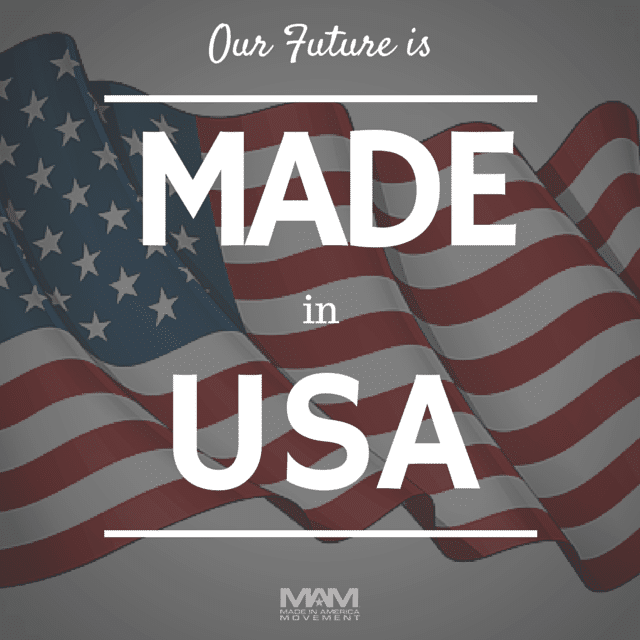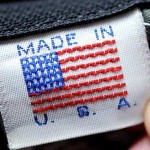Why It’s Time to Bring Manufacturing Back Home to the U.S.A.
In the last decade, we’ve lost millions of manufacturing jobs to outsourcing. According to U.S. News and World Report, there are now 5.1 million fewer American manufacturing jobs than in 2001. The lure of low wages, tax advantages, and other cost savings has made for a seemingly straightforward calculus, and manufacturer after manufacturer, supported by intricate spreadsheets, has abandoned ship until offshoring has become the emerging mantra of the new millennium. U.S. companies that still manufacture locally have slowly become outliers.
Interestingly, this dynamic now seems to be changing, as we’re beginning to see more manufacturing in the U.S. Total output from American manufacturing relative to gross domestic product is back to pre-recession levels, with more than half a million new jobs. According to the Reshoring Initiative, 15% of this job growth results from reshoring alone. There are many reasons for this shift back to the U.S.
Why It’s Time to Bring Manufacturing Back Home to the U.S.A.
More Bang For The Buck
The first has to do with cost. It used to be cheaper to manufacture outside the U.S.; the costs are now converging. In the manufacturing sector, the U.S. is still among the most productive economies in the world in terms of dollar output per worker. Specifically, a worker in the U.S. is associated with 10 to 12 times the output of a Chinese worker. That’s not a statement about intrinsic abilities; it merely reflects the superior infrastructure of the United States, with its higher investments in automation, information technology, transportation networks, education, etc. And even though this relative advantage is slowly shrinking thanks to Chinese investment in such infrastructure, the wage gap between Chinese and U.S. workers is shrinking much faster. The net effect is that overall manufacturing in the U.S. is becoming more attractive again, leading to domestic growth and reshoring.
As productivity rises and automation increasingly replaces manual labor, the returning manufacturing jobs will require a higher degree of technological sophistication from the workforce, and this, unfortunately, may leave behind those who cannot adapt. Moreover, while these jobs will be more rewarding and better paid, they will restore only a fraction of the lost jobs. Political rhetoric that proclaims a manufacturing renaissance as a panacea for lagging job markets is thus misleading and is limited to imagining the future merely as a reflection of the past.
Immediate Gratification
The second reason to manufacture in America involves lead times. Customers have come to expect short delivery windows. With services like Amazon Prime, consumers are accustomed to delivery within one or two days, if not the same day. Offshore manufacturers need to store disproportionally large amounts of inventory to accommodate these expectations. But keeping inventory is costly—it requires space, energy, and labor; it gets lost, stolen, spoiled, and damaged; in the case of technology or fashion, it may become obsolete within weeks. Currently, the U.S. stores about $1.7 trillion in inventory, which means annual inventory carrying costs of between $300 billion and $500 billion—roughly the gross domestic products of Denmark and Norway, respectively. Manufacturers with onshore facilities can cut those costs dramatically. However, these indirect costs of offshoring are much harder to quantify than direct manufacturing costs, and they were frequently ignored in the initial rush to offshore.
The Learning Curve
Another reason to move manufacturing to the U.S. is that proximity facilitates learning. Companies are starting to realize that separating manufacturing and development impedes training and knowledge transfer among a company’s employees. As one Silicon Valley executive puts it, “At any given moment in time, there is probably the equivalent of one Boeing’s 747 full of our engineers flying back and forth between the U.S. and China,” just to facilitate the dialogue between development and manufacturing. High attrition rates in China’s booming economy exacerbate the problem, and manufacturing facilities there do not develop the institutional knowledge that leads to sustainable competitive advantage. Similarly, the managerial focus is harder to maintain when manufacturing sites are halfway worldwide, so top management may neglect its strategically important manufacturing and supply chain network.
Distance is also problematic for startups that need quick turnarounds when experimenting with prototypes. It just isn’t practical for them to wait several weeks for a factory in China to return a prototype, nor can many budding entrepreneurs afford to travel abroad whenever they need to build something. Learning needs to happen quickly, and that requires local manufacturing capability. Aside from exorbitant travel costs, the true impact of these effects is hard to quantify, but it is very real.
Born Locally
Yet even harder to quantify is the emotional aspect of local craft. The lack of connection that consumers often feel with products that were made far away with an unknown impact on the environment and human welfare and delivered through opaque supply chains, combined with an innate desire for individuality, has given rise to the “maker movement.” So-called maker spaces are appearing nationwide, and companies such as MIT alumna Limor Fried’s Adafruit increasingly enjoy a place in the limelight. In these emerging craft cultures, local manufacturing enjoys a “coolness” factor well beyond yesteryear’s “Made in the USA” labels. By reshoring, traditional manufacturers can thus tap into both a demand for local products and a supply of newly developing manufacturing capabilities.
Energy Prices
A final factor is free-falling energy costs. The recent boom in U.S. crude oil and natural gas manufacturing has the potential for longtime and sustainable energy cost advantages for U.S.-based manufacturing, adding further incentive to reshoring. Yet most companies don’t seem to list energy costs as a primary driver of their reshoring efforts. I fear that this results more from the newness of the phenomenon than from the realization that planning based on simplistic metrics is not a substitute for strategic thinking.
These five factors are all important. When companies come to grips with what’s happening now (costs are decreasing, delivery times are getting shorter, learning and efficiency are becoming critical, and societal demand for local, sustainable, and responsible manufacturing is rising), they come to understand that it’s time to bring manufacturing home.




Leave a Reply
Want to join the discussion?Feel free to contribute!